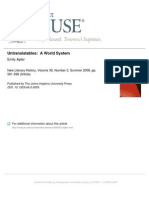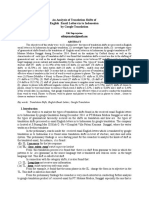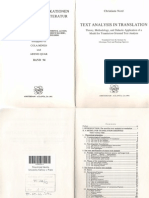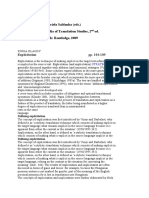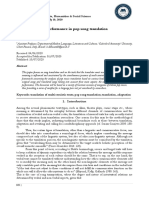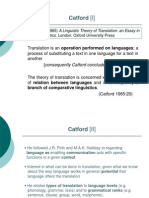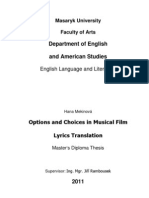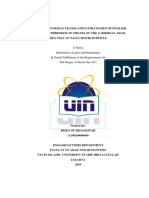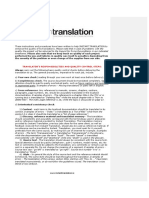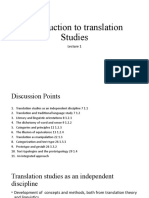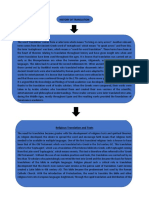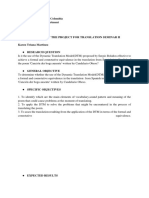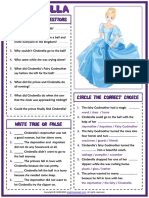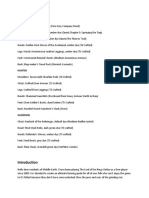0% found this document useful (0 votes)
315 views12 pagesUntranslatability Is A Property of A Text, or of Any Utterance, in One Language, For
The document discusses the concept of untranslatability, where some words or expressions in one language cannot be directly translated to another due to lack of an equivalent term. While some terms may seem untranslatable, translators have techniques like adaptation, borrowing, calque, compensation and paraphrasing to approximate the meaning. Examples are given of concepts from different languages that are difficult to directly translate into English due to differences in grammar, vocabulary and culture.
Uploaded by
Тереза КурносоваCopyright
© Attribution Non-Commercial (BY-NC)
We take content rights seriously. If you suspect this is your content, claim it here.
Available Formats
Download as DOCX, PDF, TXT or read online on Scribd
0% found this document useful (0 votes)
315 views12 pagesUntranslatability Is A Property of A Text, or of Any Utterance, in One Language, For
The document discusses the concept of untranslatability, where some words or expressions in one language cannot be directly translated to another due to lack of an equivalent term. While some terms may seem untranslatable, translators have techniques like adaptation, borrowing, calque, compensation and paraphrasing to approximate the meaning. Examples are given of concepts from different languages that are difficult to directly translate into English due to differences in grammar, vocabulary and culture.
Uploaded by
Тереза КурносоваCopyright
© Attribution Non-Commercial (BY-NC)
We take content rights seriously. If you suspect this is your content, claim it here.
Available Formats
Download as DOCX, PDF, TXT or read online on Scribd
/ 12
